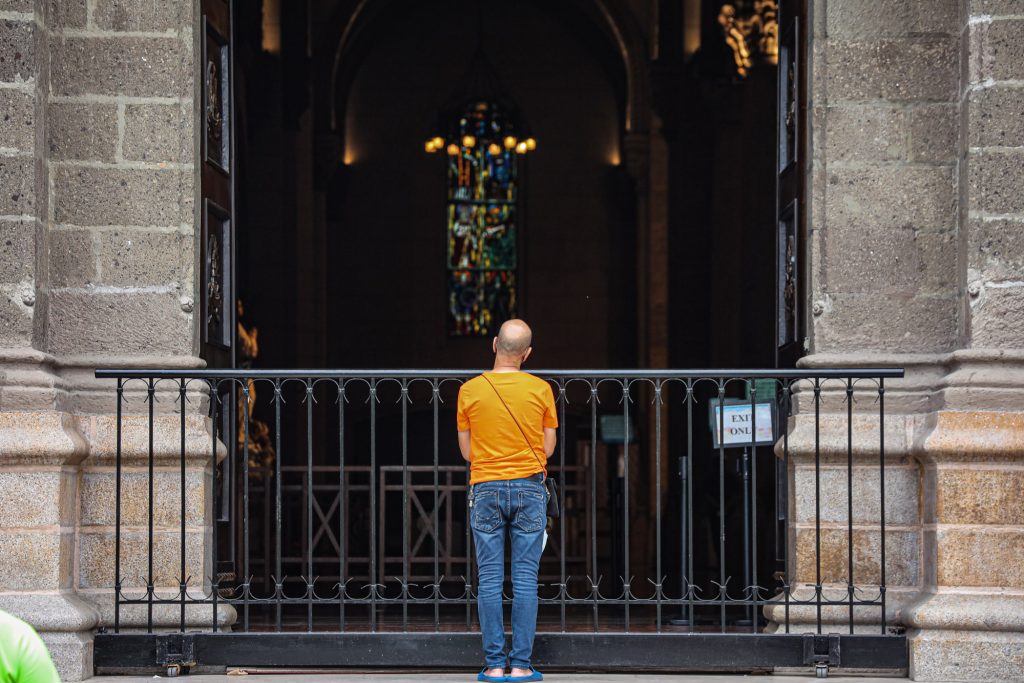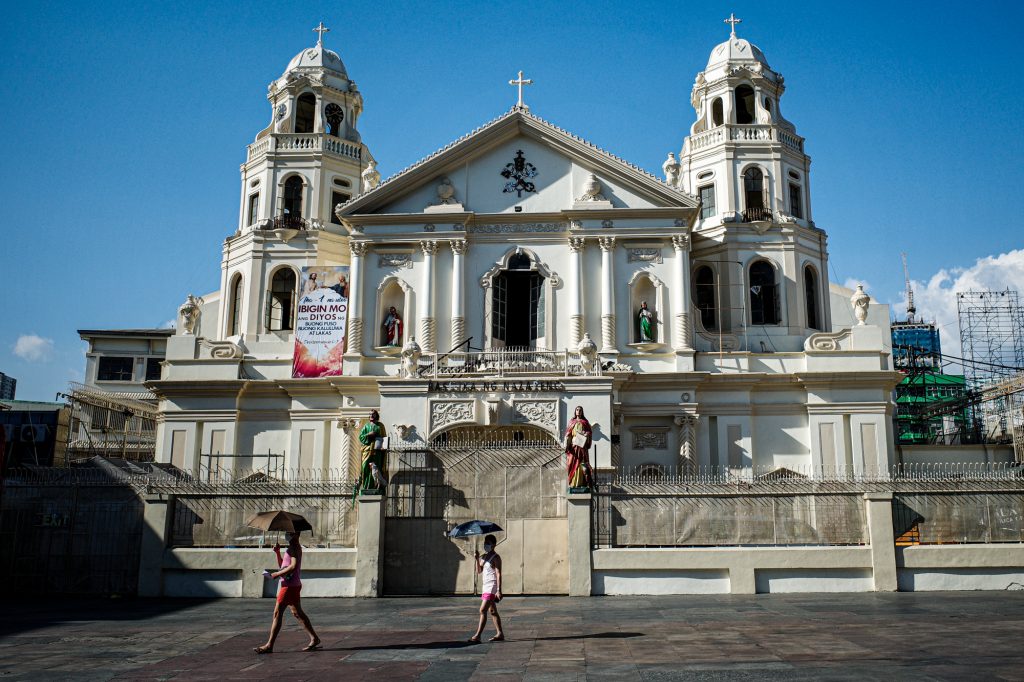
Churches in Metro Manila announced that they will be suspending the public celebration of Masses following the government’s declaration of an “enhanced community quarantine” in the region.
All dioceses in the Philippine capital have ordered the suspension of the celebration of public Masses until August 20 and dispense the Catholic faithful from their weekly obligations.
Catholic bishops issued statements appealing to the people to stay at home and follow the government’s health guidelines during the lockdown.
Masses and other religious celebrations will continue to be streamed online.
“Let us continue to support the preventive measures being implemented by the government to slow down the surge of the virus,” said Bishop Honest Ongtioco of Cubao in a statement.
“We encourage the faithful to stay at home and stay safe,” he said. “We will reopen our churches for public worship on August 21, if conditions improve.”
In the Diocese of Parañaque, funeral Masses will be allowed but under strict health protocols.
Bishop Jesse Mercado of Parañaque said churches will be left open for personal prayer as long as people follow minimum health standards.
“We continue to storm heaven with our prayers especially in this uncertain situation of our time,” said the prelate.
“May our prudent and faithful observance of our protocols ensure the safety of our family and country,” he added.
The Manila Cathedral also announced the temporary suspension of the public celebration of Masses.
“Following government regulations released today prohibiting religious gatherings, the Manila Cathedral temporarily suspends public celebration of Masses from July 31 to August 20,” read an announcement from the cathedral.
“The daily celebration of the Mass will continue to be broadcast online through the Manila Cathedral Facebook page and YouTube channel,” it added.

President Rodrigo Duterte approved the imposition of lockdown measures in the capital in a bid to contain the spread of the Delta coronavirus variant and to shield the country’s medical system.
The capital region, a sprawl of 16 cities, is home to more than 13 million people.
The lockdown, which is expected to cost the economy US$4 billion, will mean people cannot leave their homes, except for essential shopping, while indoor and al fresco dining is banned.
“Delta is all over Metro Manila already. This is proper intervention,” Benjamin Abalos, chairperson of the capital’s council of mayors, told Reuters.
The mayors planned to step up vaccinations to 250,000 doses a day, up from 150,000 now, he said.
The highly transmissible Delta variant, first detected in India, has spread rapidly across much of Southeast Asia.
The Philippines also extended a ban on travelers coming from 10 countries including India, Indonesia, Thailand, and the United Arab Emirates to Aug. 15.
Already battling the second-worst coronavirus outbreak in Asia, the Philippines has recorded over 1.58 million COVID-19 cases and 27,722 deaths.
On Saturday, the country recorded over 8,000 new COVID-19 cases, according to the Department of Health.
With 8,147 new cases, the country ended July 2021 with a total caseload of 1,588,965. Of the total cases, 60,887 or 3.8% are currently sick.
There are also 167 new deaths due to the coronavirus disease, bringing the death toll to 27,889. Meanwhile, recoveries are up by 9,117, pushing the total recovered cases to 1,500,189.
The DOH reported a positivity rate of 14.7% out of 54,857 tests in its bulletin. These positive cases are added to the tally of confirmed cases only after further validation.
The country has reported 216 cases of the Delta variant, but health experts say more could have gone undetected because of the slow pace of genome sequencing.
The second wave in the Philippine outbreak peaked in April but infections have started to rise again in recent weeks. Currently hospital occupancy in the capital area is 49%, while the rate for intensive care beds is 58%.
With only 7% of the country’s 110 million people fully vaccinated, tens of millions remain vulnerable to COVID-19. – with a report from Reuters
Source: Licas Philippines
0 Comments